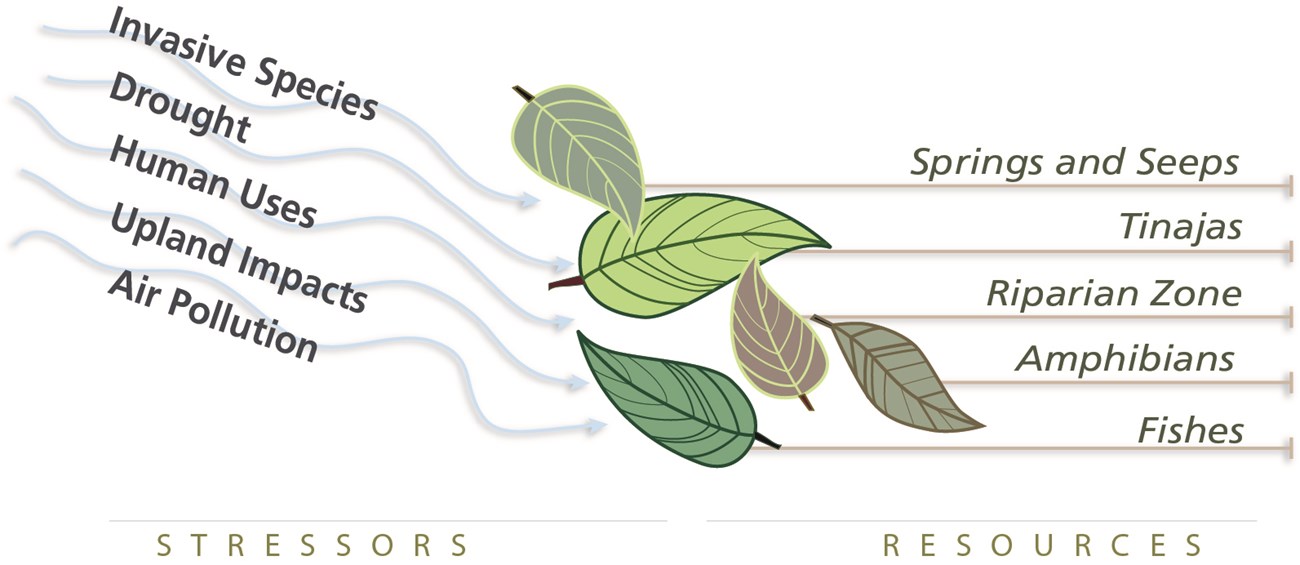Drivers and Stressors: Forces Contributing to Ecosystem Change
What do a coral reef, desert, tropical rainforest, and grassland all have in common? They are all types of ecosystems. Ecosystems are defined by the network of interactions among organisms and between organisms and their environment. Both internal factors (such as food webs, competition, and decomposition) and external factors (such as climate and topography) control ecosystems. Ecosystems are dynamic — they are in the process of recovering from past disturbances and are periodically exposed to new disturbances. In addition to natural disturbances, human-caused disturbances, or stressors, can affect the integrity or health of ecosystems. To assess the condition of resources in an ecosystem, we need to understand the key drivers, ecological processes, and stressors.Drivers and Stressors are important parts of the conceptual framework used to show ecosystem context in NRCAs and other reports that assess resource condition in parks.So What are Drivers and Stressors?
Drivers
- Climate change
- Energy production and mining
- Biological resource use
- Human intrusion and disturbance
- Invasive and problematic species and pathogens
- Agriculture
Stressors
Examples of stressors include:
- Changes in temperature and precipitation
- Air pollution
- Water contaminants
- Altered hydrology
- Resource exploration and extraction
- Accidentally started fire
- Forest pests
- Off-road vehicle use (noise and dust)

How are Drivers and Stressors used?
In an NRCA, we seek to understand important existing, or newly emerging drivers and stressors affecting the resources the park selected to evaluate. Park managers need to understand the current state of their resources and whether conditions are improving, stable, or deteriorating, and they need to know what is responsible for changes. Assessing current conditions and trends of park resources strengthens knowledge to manage or mitigate stressors and impacts. Once condition has been assessed, park managers can respond with management strategies and activities to maintain, improve, or restore desired ecological resource conditions in parks. Such responses might include strategic planning, on-the-ground management actions, partnerships, interpretive/educational programs for visitors, and/or studies or monitoring of park resources.
To NRCA Program Home>
Last updated: April 7, 2022
